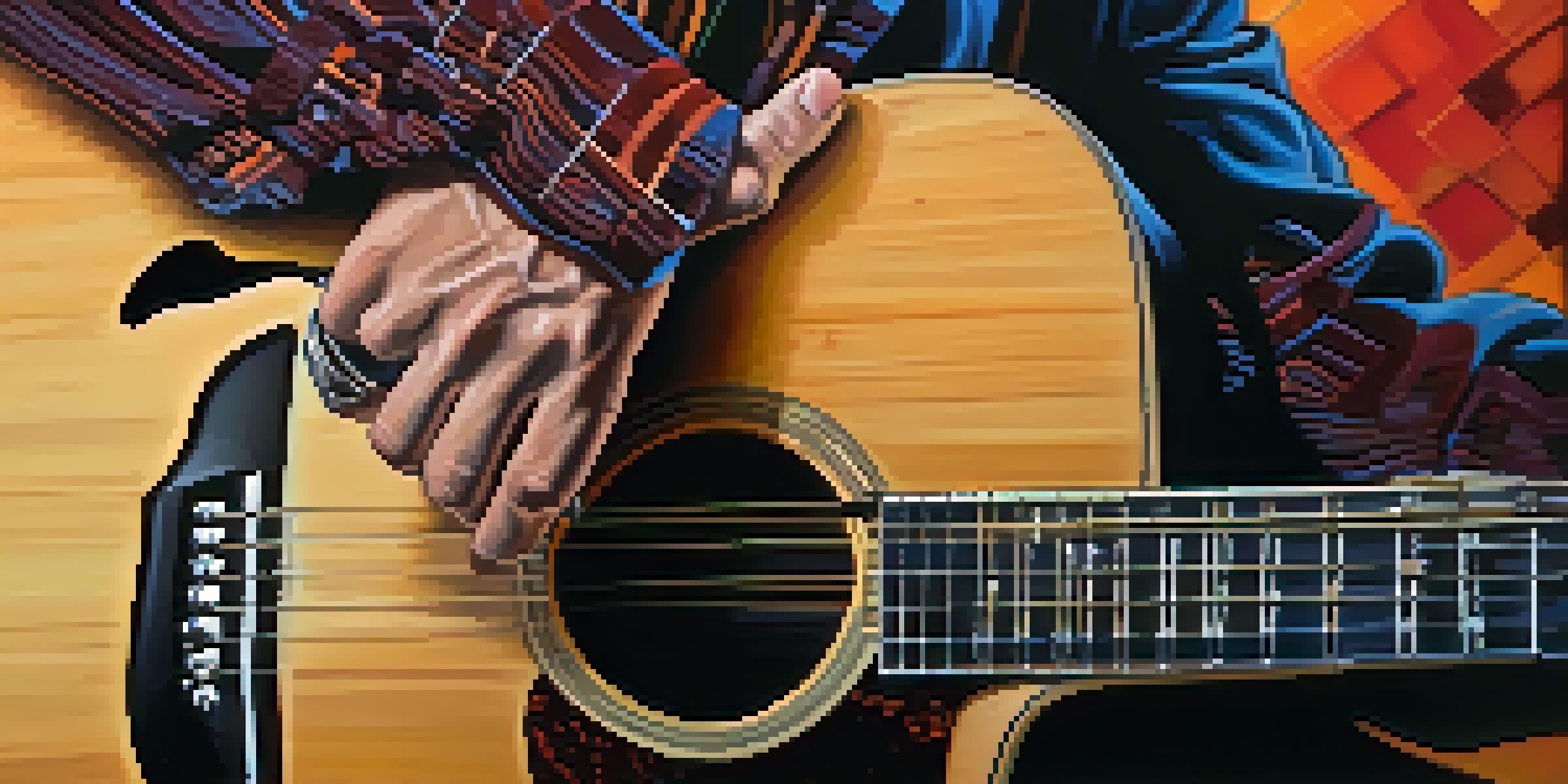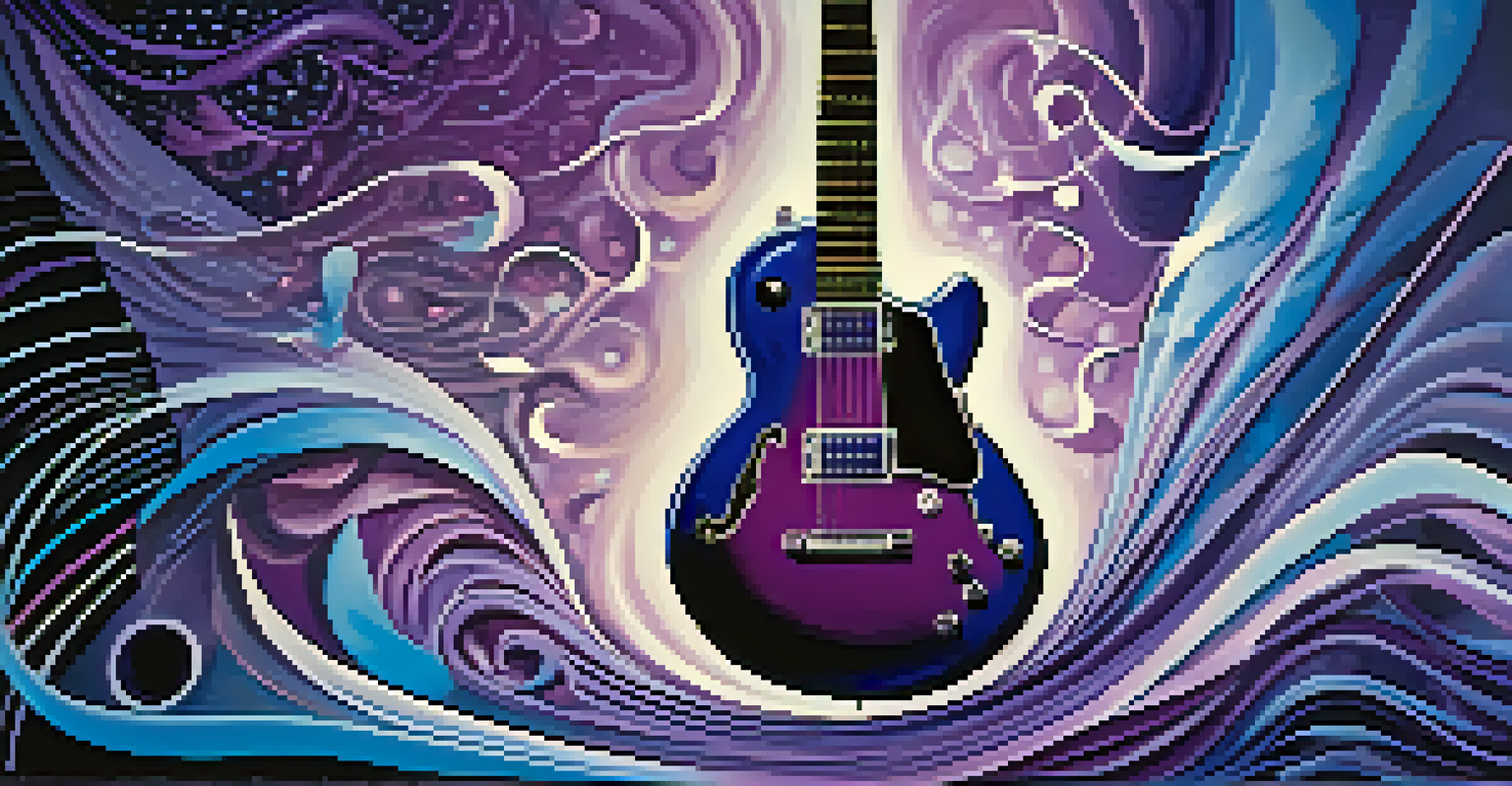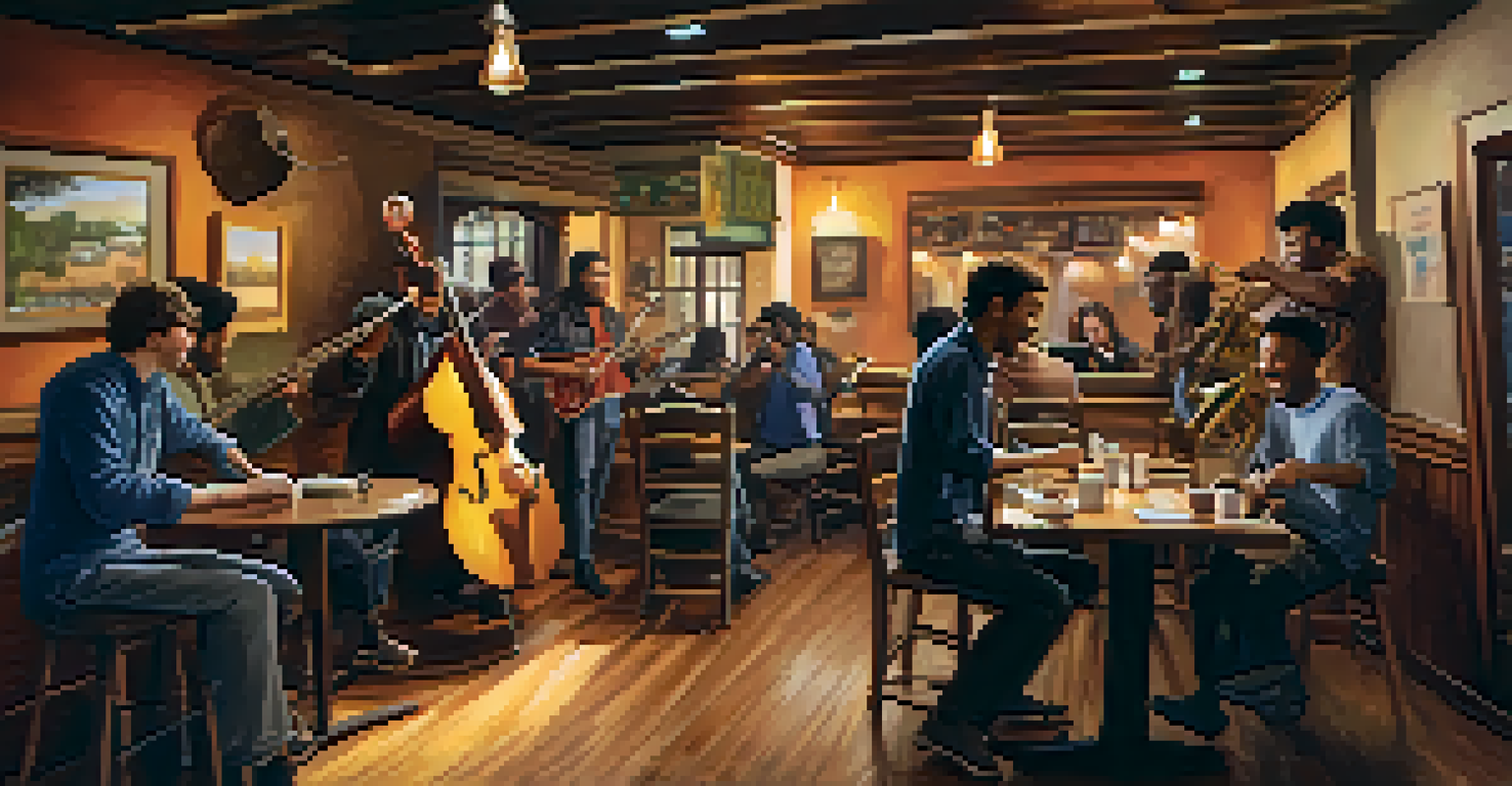The Role of Rhythm in Guitar Improvisation Explained

What Is Rhythm and Its Importance in Music?
Rhythm is the heartbeat of music; it gives structure and flow. Think of it as the underlying pulse that guides melodies and harmonies. Without rhythm, music would feel chaotic and disorganized, much like trying to dance without a beat.
Rhythm is the pulse of music, the heartbeat that drives the melody forward.
In guitar improvisation, rhythm acts as a foundation, allowing musicians to express their creativity while staying grounded. When you play, the rhythm dictates how notes are placed in time, influencing the overall feel of a piece. This is crucial for making your improvisation engaging and dynamic.
For example, consider a drummer setting the pace for a band. Similarly, a guitarist must be aware of rhythm to complement other instruments. Whether it's a slow blues or a fast-paced rock tune, understanding rhythm is key to creating compelling guitar solos.
The Connection Between Rhythm and Melody
Melody and rhythm are like two dancers in a duet, each enhancing the other's performance. While melody is the sequence of notes, rhythm determines how those notes are spaced in time. This relationship is vital for creating memorable musical phrases.

When improvising, guitarists must think about how their melodic lines interact with the rhythm. For instance, playing a melody with syncopation can add excitement and surprise, making the listener sit up and take notice. It’s this interplay that keeps improvisation fresh and interesting.
Rhythm: The Heart of Music
Rhythm serves as the foundational pulse of music, guiding melodies and harmonies to create structure and flow.
Imagine a conversation where one person interrupts at just the right moment; it adds flavor and spontaneity. Similarly, mastering the connection between rhythm and melody allows guitarists to create solos that are both expressive and captivating.
How to Develop a Strong Sense of Rhythm
Developing a strong sense of rhythm is akin to laying a solid foundation for a house. Without it, everything else can feel shaky. Start by practicing with a metronome, which helps you maintain a consistent tempo and understand how various rhythms fit within it.
Without rhythm, music is just a collection of sounds; with rhythm, it becomes a story.
Another effective way is to play along with your favorite tracks. This not only improves timing but also allows you to absorb different rhythmic styles. When you play along with others, you learn to adapt your rhythm to fit the group, a crucial skill for improvisation.
Lastly, don't overlook the power of clapping or tapping out rhythms away from your guitar. Engaging physically with rhythm helps reinforce your understanding and can make a significant difference in your improvisational skills.
Experimenting with Rhythmic Patterns
One of the most exciting aspects of guitar improvisation is the freedom to experiment with rhythmic patterns. Think of it as painting with music; each stroke adds texture and depth. Try mixing different rhythms, such as triplets or dotted notes, to create unique phrases.
For example, if you usually stick to straight eighth notes, challenge yourself by incorporating syncopation or swing into your playing. This not only keeps your solos interesting but also expands your musical vocabulary. The more you explore, the more you’ll discover your personal style.
Connection Between Rhythm and Melody
The interplay between rhythm and melody enhances musical expression, allowing guitarists to create captivating improvisations.
Remember, improvisation is about expressing yourself. By experimenting with various rhythmic patterns, you can find new ways to convey emotions and tell a story through your guitar.
The Role of Rhythm in Different Genres
Different music genres have distinct rhythmic characteristics that shape their overall feel. For instance, jazz often employs complex rhythms and syncopation, while rock tends to favor straightforward backbeats. Understanding these nuances can greatly enhance your improvisational skills.
When improvising in a specific genre, it's essential to grasp its rhythmic foundation. For example, a country guitar solo might incorporate a shuffle rhythm to create a laid-back vibe, while a funk piece may utilize off-beat accents for a groovier feel. Tailoring your rhythm to fit the genre helps you stay authentic and connect with the audience.
So, dive into various genres and listen closely to how rhythm plays a role in each. This exploration not only broadens your musical horizons but also enriches your improvisational toolkit.
Practicing Rhythmic Improvisation Techniques
Practicing rhythmic improvisation is essential for developing fluidity and confidence on the guitar. One effective technique is to play a simple chord progression while varying the rhythm of your strumming or picking. This exercise allows you to focus on rhythm without getting bogged down by complex melodies.
Another method is to create rhythmic motifs that you can repeat and alter throughout your improvisation. Think of these motifs as building blocks that can be rearranged to create something new. This not only adds cohesion to your playing but also makes it easier to explore different ideas without losing your way.
Importance of Practicing Rhythm
Developing a strong sense of rhythm through practice is essential for improving improvisational skills and enhancing live performances.
Lastly, don't forget to record yourself while practicing. Listening back can reveal areas for improvement and help you identify which rhythmic techniques resonate most with your style. Over time, these practices will elevate your improvisational skills.
Bringing It All Together: Rhythm in Performance
When it comes to live performance, rhythm is your best friend. A strong sense of rhythm not only enhances your playing but also elevates the overall experience for your audience. As you improvise, being aware of the rhythm allows you to interact with other musicians and respond to their cues.
In a performance setting, rhythm can create tension and release, guiding the emotional journey of the music. For instance, building up to a climactic solo with intricate rhythmic variations can engage your listeners and leave them wanting more. This adds an extra layer of excitement to your performance.

Ultimately, remember that rhythm is not just a technical aspect of playing; it’s an emotional one. By mastering rhythm in your improvisation, you can connect deeply with your audience, making your performances unforgettable.